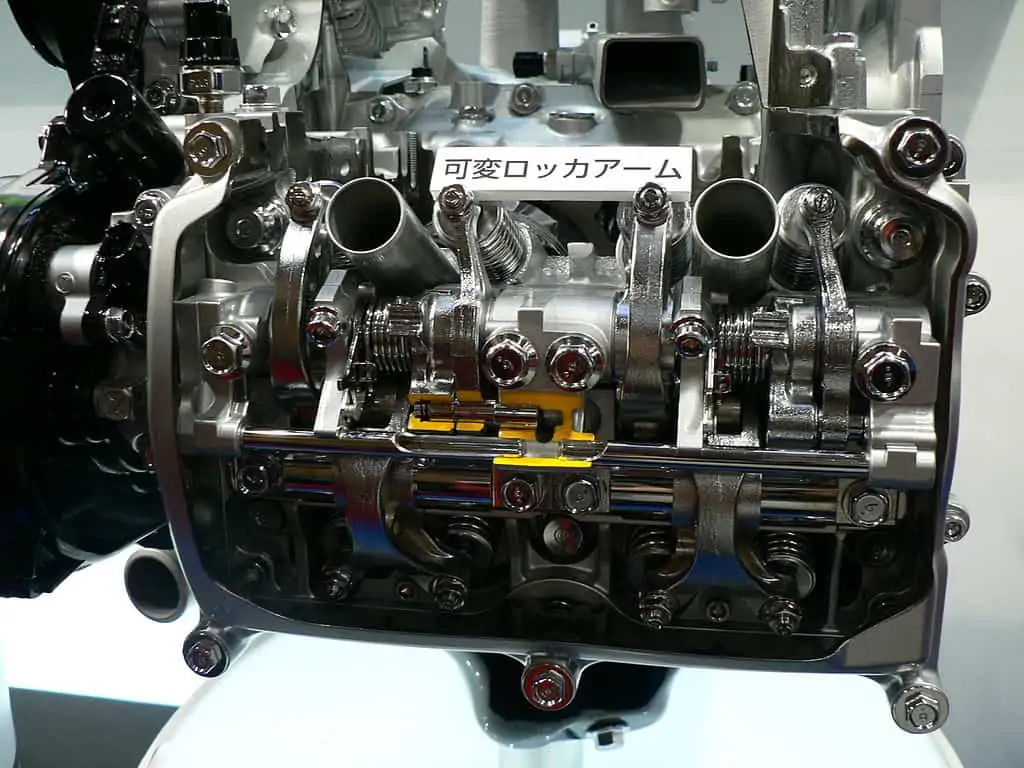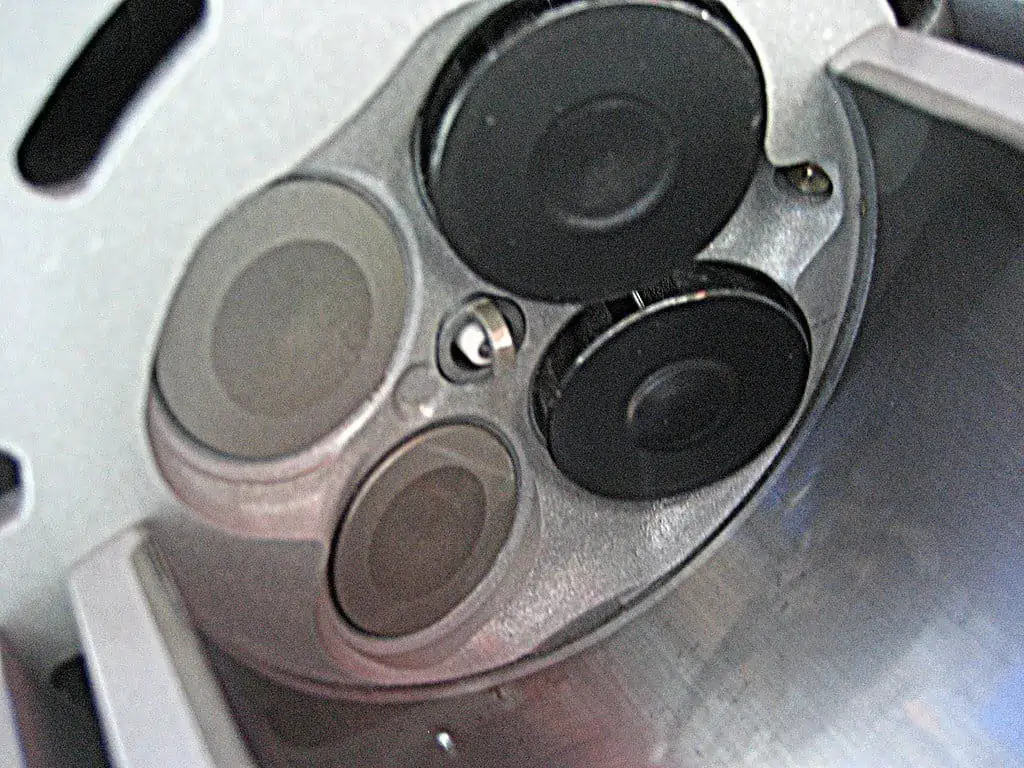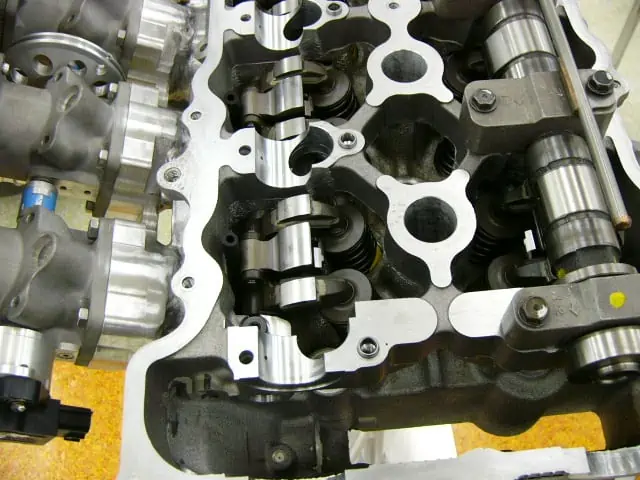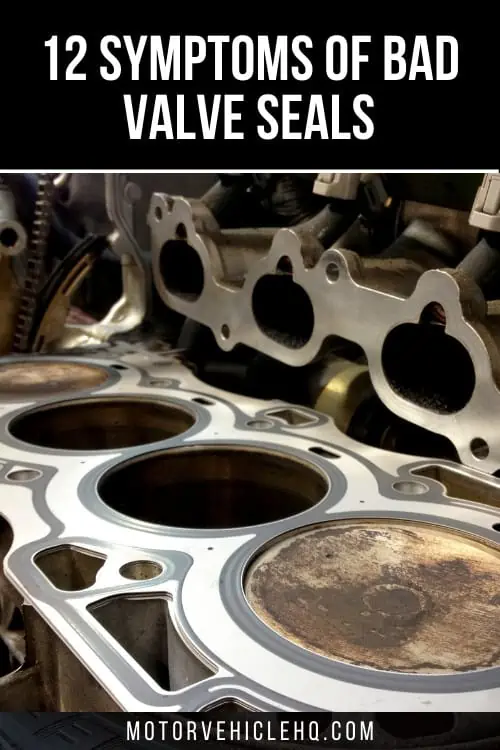The significance of valves is often overlooked by automobile owners. These regulate the volume of fuel and air that are mixed for combustion in the cylinders.
Gasses from combustion cannot travel through the sleeves on the valve. However, if you are aware of the symptoms of bad valve seals, you can quickly identify when the valves begin to wear out.
Additionally, the seal above the valves prevents the oil in the top from descending into the engine. The heavy-duty rubber seals, which are enclosed in a little collar, are simply positioned over the top of the valve.
Any system’s regulation relies heavily on the employment of valves, and various engine types can utilize seals made specifically for those purposes. For a seal to work well and last a long time, proper design and manufacture are essential.
The engine of a vehicle has the highest level of wear. Some parts unavoidably become damaged as the engine warms up and exerts a lot of strain. One such component is that, over time, the pressure and heat of an engine may harm the valve seals.
The valve seals are essential for maintaining the pressure of the automobile engine and the engine oil on separate sides. In contemporary engines, faulty valve seals are not extremely prevalent, but they do occur.
At the end of the day, a good valve seal may prevent you from having to spend thousands of dollars on repairs, so it’s crucial to check them occasionally.
What are Valves and Valves Seals
By opening and shutting at the appropriate times, valves are a component of cars that assist the engine in working smoothly.
The car contains a variety of valves that perform various functions. For example, the exhaust valve sends used gasses outside, while the entrance valve lets the mixture enter the cylinder.
One of the most crucial components of regulation in any mechanism is, of course, the valve. To regulate valve lubrication and oil consumption in numerous types of engines, valve seals are made to support the valve. Because of this, a seal’s performance must be ensured through well-considered design.
The Purposes of Valve Seals
The amount of blended fuel that enters the cylinder is controlled via valves. To assist in stopping combustion gas leaks and oil leaks into the engine area, the valve itself includes a seal and, occasionally, a protective sleeve.
These seals are typically made of a super-strong rubber substance and fitted into a tiny collar at the top of the valve stem. When the valve seals begin to deteriorate, you’ll start to experience certain severe symptoms of bad valve seals.
There are inlet and exhaust valves on every engine. Valves open to let fuel in or exhaust out. Once their cycle is through, they shut down. Valve stems are placed in long, tubular guides that give them a track to travel up and down.
The rocker arms, springs, lifters, and push rods aid the camshaft in lifting and lowering the valves individually. When a valve sticks open or closed, an engine misses. The performance and lifespan of an engine might suffer significantly from stuck valves.
A cylinder head of a four-valve engine by Tennen-Gas / CC BY-SA 3.0
To prevent a catastrophic engine breakdown, they must be addressed right away. It is important to diagnose someone right away.
12 Symptoms of Bad Valve Seals
Any issue with an automobile valve is severe, particularly if it affects the engine. What are the symptoms of bad valve seals, then?
Properly sealed valves are essential for your car to operate at its best. Any seal or valve problem necessitates an engine rebuild to get the automobile back into operating order.
Here are some of the common symptoms of bad valve seals that you should look out for.
Popping or Ticking Noise
A ticking or popping noise is the first sign that anything is wrong with your car’s valves since they are one of the early symptoms of bad valve seals.
These difficulties may occasionally show up before any other issues. The engine makes a louder roar as you go faster.
It indicates that some of the valve’s train parts are misaligned or have worn out. The automobile engine not receiving adequate lubricant is the final possible cause.
Most automobiles feature hydraulic lifters. These need steady pressure and continuous lubrication. The valve train would move too much if the pressure were to get slightly off.
If these noises are present, make sure to take off the valve cover so you can inspect the valve seals to see whether they are functioning correctly.
The untrained eye may find this challenging. But it’s worth giving it a shot. If you find that they’re awful afterward, you may swap them out for a fresh set as you proceed.
Blue Exhaust Smoke
Blue smoke rising from the exhaust is a certain sign that the automobile engine has some problem if you’re seeking clear symptoms of bad valve seals.
Blue smoke is a typical indicator, even if it is not a sign that the automobile valve is malfunctioning. When the valve guides and seals deteriorate, oil can enter the combustion chamber and burn alongside the motor fuel.
Owners of cars may also note that the oil level keeps dropping or that more oil is required than usual. Even while the quantity of blue smoke associated with valve guide and seal damage is negligible, if there is a lot of it, you may have broken piston rings.
The smoke gets more and more out of control as the issue gets worse. When traveling at high speeds, you’ll notice that the blue smoke persists longer than before.
Significant Smoke Presence
One of the symptoms of bad valve seals is excessive amounts of smoke. When a car is started, there is a lot of exhaust smoke that the driver can see, but excessive smoke can be caused by deteriorated valve seals. Because of this, it is advised that when automobile owners see smoke waves, they examine the valve seal.
Variable valve timing system on SOHC 4-valve-per-cylinder by 160SX / CC BY-SA 3.0
High Oil Consumption
A typical engine has about 4 liters of engine oil, and if you continue to drive your car with failing valve seals, you will notice the oil level dropping.
High oil usage is also one of the symptoms of bad valve seals. This is due to oil decreasing at a faster pace than usual due to leaks or excessive burning.
With a simple oil dipstick and regular monitoring of the oil levels, you can find this oil loss. If there are no visible oil leaks anywhere around the car, the valve seal may still be faulty since the oil will probably be burned up and produce a lot of smoke.
Taking your automobile to a professional for a checkup is a good idea if you detect bad oil consumption along with other symptoms of bad valve seals.
Engine Power Decrease
A decline in engine performance and power is also one of the symptoms of bad valve seals. Car valves are made by automakers to precisely fit into their seats and to have as little free movement as possible.
When oil builds up on top of the valve due to leaky valve guides and seals, the valve may lose its seat or develop a gap. It may also result in problems with compression, which would result in poor combustion and power loss.
Burnt Valves
Burnt valves, which contribute to problems with engine power, are a different problem. A burned valve is depleted of material and has significant holes, which allow gasses to escape and reduce the compression rate.
Leaking guides and seals are the most common causes of burned valves. They might have neglected to address a compression problem with the automobile, for example.
The likelihood of a burned valve rises when this problem coexists with an exhaust gas recirculation problem in the cooling system. It is one of the symptoms of bad valve seals and must not be disregarded at any cost.
If you have a burned valve problem, your engine will perform poorly and, in the case of a V8, operate on just 6 cylinders. This will be the case because some of the cylinders don’t have adequate compression since the burnt-out valves don’t make a tight enough seal.
The only options to solve this issue are to replace the broken valves with new ones and, if necessary, to completely overhaul the cylinder head or heads.
A Rough Idle
When your automobile is idle, you can see if the valve seal is broken. The automobile engine is frequently prone to maintaining a constant low idle RPM.
As a result, if a valve seal fails and oil enters the combustion chamber, the engine may occasionally stall or idle harshly.
The spark plugs may also become blocked with oil as a result of faulty intake valve seals. It is time to examine your valve seals if you notice hard idling and blue smoke.
Buildup of Carbon
We cannot resist mentioning the carbon buildup on the cylinder head while discussing the symptoms of bad valve seals.
This is the case because the oil is rather thick, and in some circumstances, it doesn’t burn off entirely, or, if it does, it leaves behind significant deposits that attach to the valve seats.
The components that hold the valves in place are called valve seats. In this case, if the valve and seat are somewhat apart, loss of compression is inevitable.
The engine head’s carbon buildup, particularly where the seats are concerned, is the root of this issue.
The issue will first be trivial, and you won’t give it much thought. But as it expands, the engine will run out of air. If you want the engine to run well, the compression level must be kept at a certain level.
Implementing the Cold Engine Test
An easy way to determine whether you have a bad valve seal is to run an engine test with the engine cold. The top of the valve cover’s head will retain some oil from the last time you drove it if your car has been resting overnight or for a prolonged length of time.
A blueish smoke emerges from the tailpipe when the engine is started because the oil is drawn into the combustion chamber through the defective seal. This might mean your valve is not properly sealed, in which case it’s time to replace it.
Test for Engine Braking
Engine braking refers to the process of slowing down your car within an engine using techniques other than the exterior brakes.
When you press the accelerator pedal after coasting for a while, oil that has accumulated at the front cover of the head from a faulty valve seal may start to burn.
This is obvious, especially while traveling downhill, and the heavy smoke coming from the tailpipe will again serve as a signal. In this situation, the oil burns longer than usual.
Deficiencies in Acceleration Power
A lack of acceleration power is also one of the symptoms of bad valve seals. If you want to check if this is the case, you may run a compression test.
The catalytic converter, spark plugs, and valves may get blocked with burned oil if the valve seals are very poor.
If your catalytic converter is blocked, this may seriously affect your car’s performance and make it seem much slower than usual.
Spark Plugs with Oil Buildup
Let’s now discuss the additional symptoms of bad valve seals, which include a clogged or broken catalytic converter. What causes this to occur, though?
This frequently occurs as a result of the burning oil inside the engine and the particles that the burning oil releases. Rather than being burned off, they sort of adhere to the catalytic converter.
The catalytic converter was made for burning gasoline, not for burning oil. Therefore, these particles won’t entirely burn off in the catalytic converter and will remain there instead, causing the catalytic converter to become clogged.
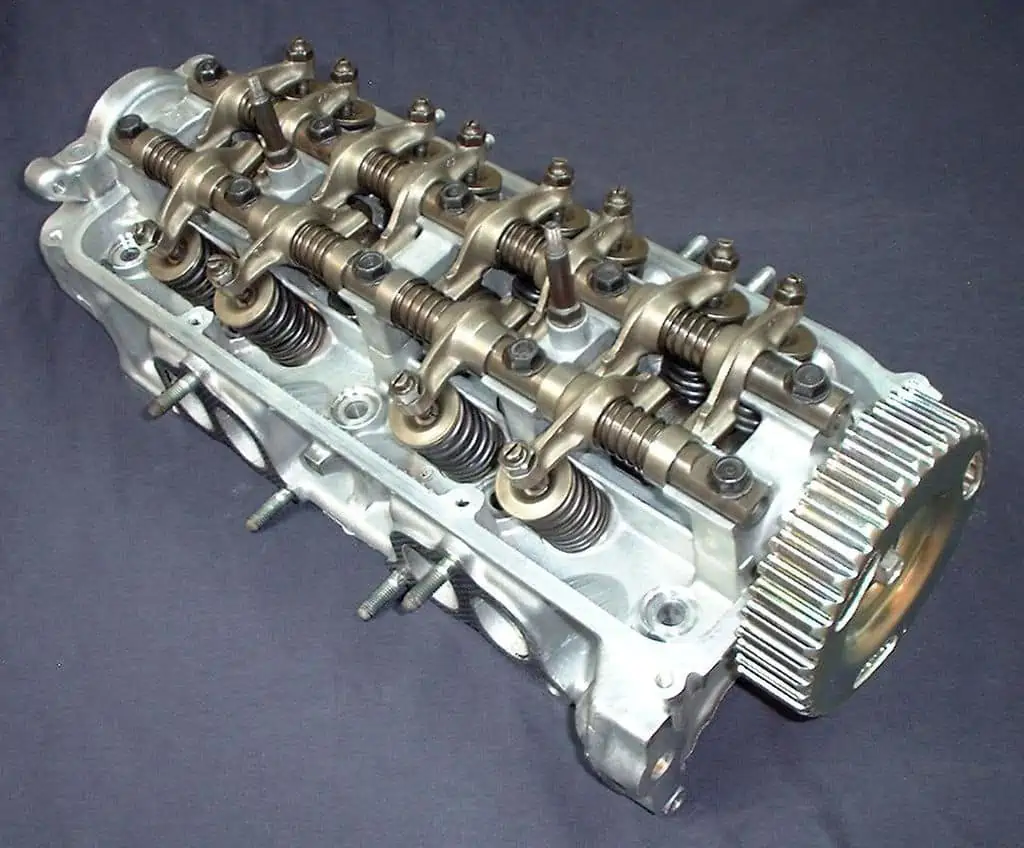
This condition is risky since catalytic converters may cost up to $1,500 and are quite pricey. So, if you want to avoid paying for these pricey repairs, be aware of the symptoms of bad valve seals.
The Cost of Replacing Bad Valve Seals?
This task can be completed for less than $450 if you work alone. However, you may anticipate spending more than $1,500 if you take your car to an auto repair shop.
This is true since replacing and adjusting the valve stems requires removing the engine head, which is a labor-intensive process. This is a multi-hour task. As a result, the price is slightly higher.
How Can I Tell If a Valve Seal Is Bad?
The symptoms of bad valve seals have been discussed. Let’s now examine the quickest and most efficient way to identify this issue.
Checking the spark plugs must be first on your list of things to accomplish. Get rid of them all, then place them on a seat. Check to see whether they contain any dark, slimy residues. If they have and they can smell burned oil, the valve seals are the issue.
You may also do a compression test to determine which cylinders are leaking. In general, the compression test will reveal a lot more about the longevity of the valves and rings. You can proceed to remove the valve cover and check the valve seals.
If they are damaged, you will need to remove the head and examine the entire system on a workbench. Examine the state of the valve guides and clean them clear of the oil residue.
Once you’ve resolved this, you may proceed to change the valve guides. And we’ll describe how to accomplish this job on your automobile in the chapter that follows.
How Can Bad Valve Seals Be Fixed?
Fixing the valve seals is very simple. The first step is to remove the engine head and set it on a bench after understanding all the signs and symptoms of bad valve seals.
Next, you may take each valve out individually. As you put them back, be careful to follow the same sequence that you removed them. That way, you’ll know what goes where when you reassemble them.
The next step is to detach the valve seals from the valve stems once you’ve removed everything else. Sharp pliers or a specialized tool can be used for this. Just be careful not to damage the valve stem. The cost of the repair will increase dramatically if the valve stem is damaged.
You can then proceed to install the replacement seals after removing the valve seals. Put a long plug on top of them after carefully positioning them. When the valves are in position, lightly tap the socket.
You may put the head back together once all of the valve seals have been installed. Just be certain you set the valves correctly.
Having an automobile with improperly adjusted valves is undesirable. You will require specialized tools for this. Specifically, the feeler gauge and the valve adjustment tool. These are reasonably priced and are available for a few bucks. That concludes the process of replacing a valve seat.
Variable valve timing with lift control and four valves per cylinder by 160SX / CC BY-SA 3.0
Final Thoughts
Much information on valve seals has been addressed in this article. In the beginning, we discovered what valve seals are and the symptoms of bad valve seals. These include oil consumption, dirty spark plugs, blue smoke, and others.
After that, we discovered how simple it is to detect a faulty valve seal issue. Given that, it doesn’t take a lot of experience. The last thing we learned was how to repair the damaged valve seals at home.
It is always preferable to look to experts for used automobile purchases as well as for any repairs or upkeep required for your current vehicle.
Naturally, there is a plethora of knowledge on how to fix damaged valve seals online. You shouldn’t be reluctant to bring your car to a reliable auto care shop, though, if you aren’t comfortable replacing or doing the repairs yourself.
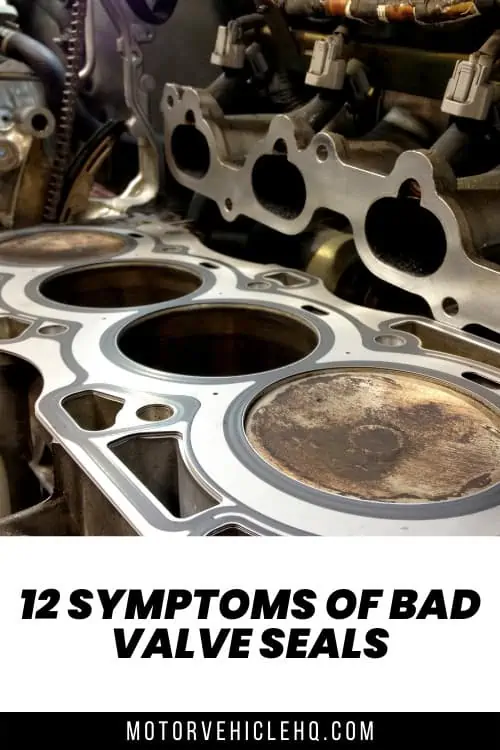

Jim Wicks is the founder of MotorVehicleHQ. With over two decades of experience in the automotive industry and a degree in Automotive Technology, Jim is a certified car expert who has worked in various roles ranging from a mechanic, car dealership manager, to a racing car driver. He has owned more than 20 cars over the past 15 years. Ask him about any vehicle you see on the road and he can tell you the make, model and year. He loves the aesthetics of all things cars, and keeps his vehicles in pristine condition.
In his free time, Jim enjoys getting his hands dirty under the hood of a classic car or taking long drives along the country roads. His favorite car? A 1967 Shelby GT500, a true classic that, according to Jim, “represents the pure essence of American muscle.”

